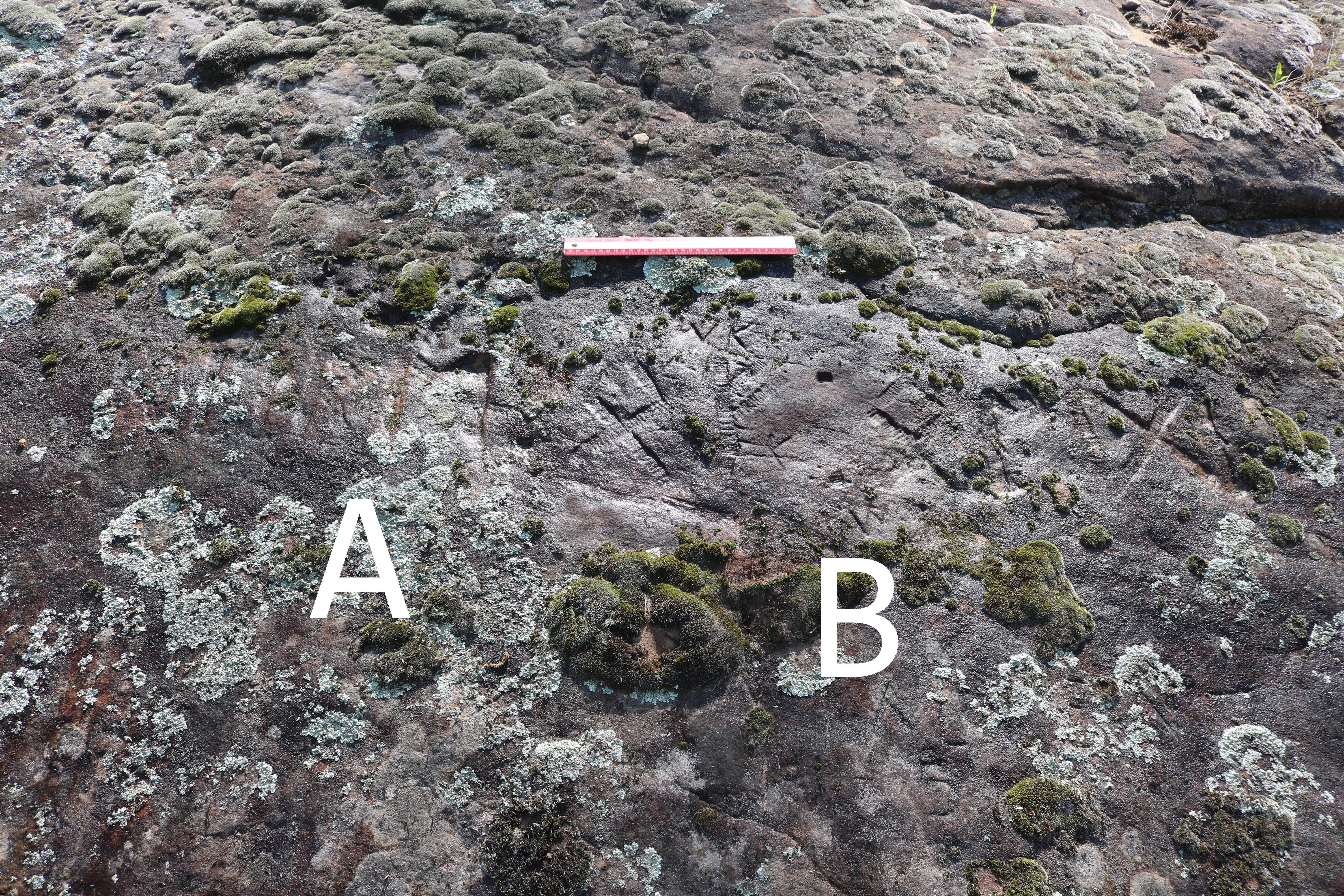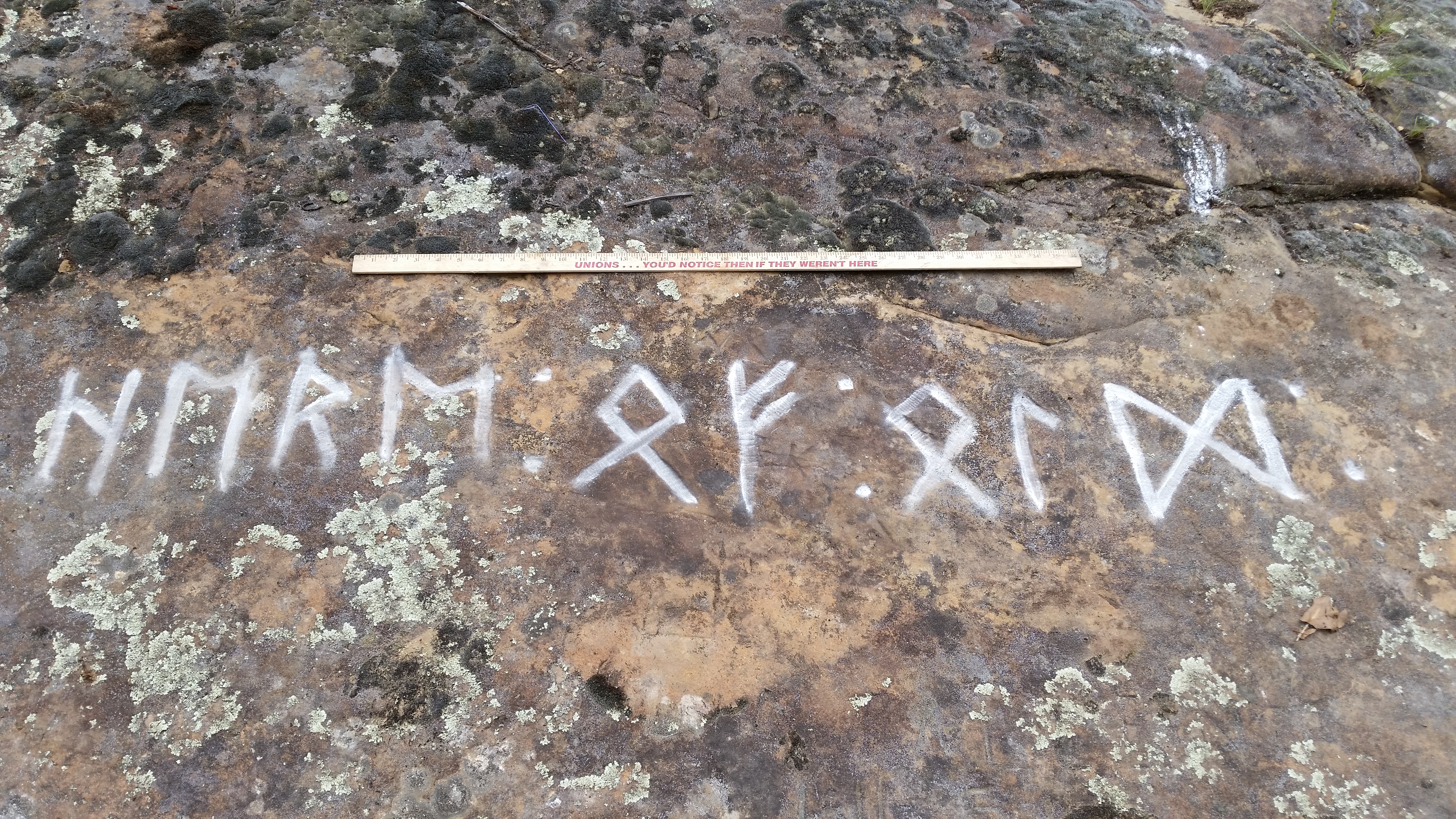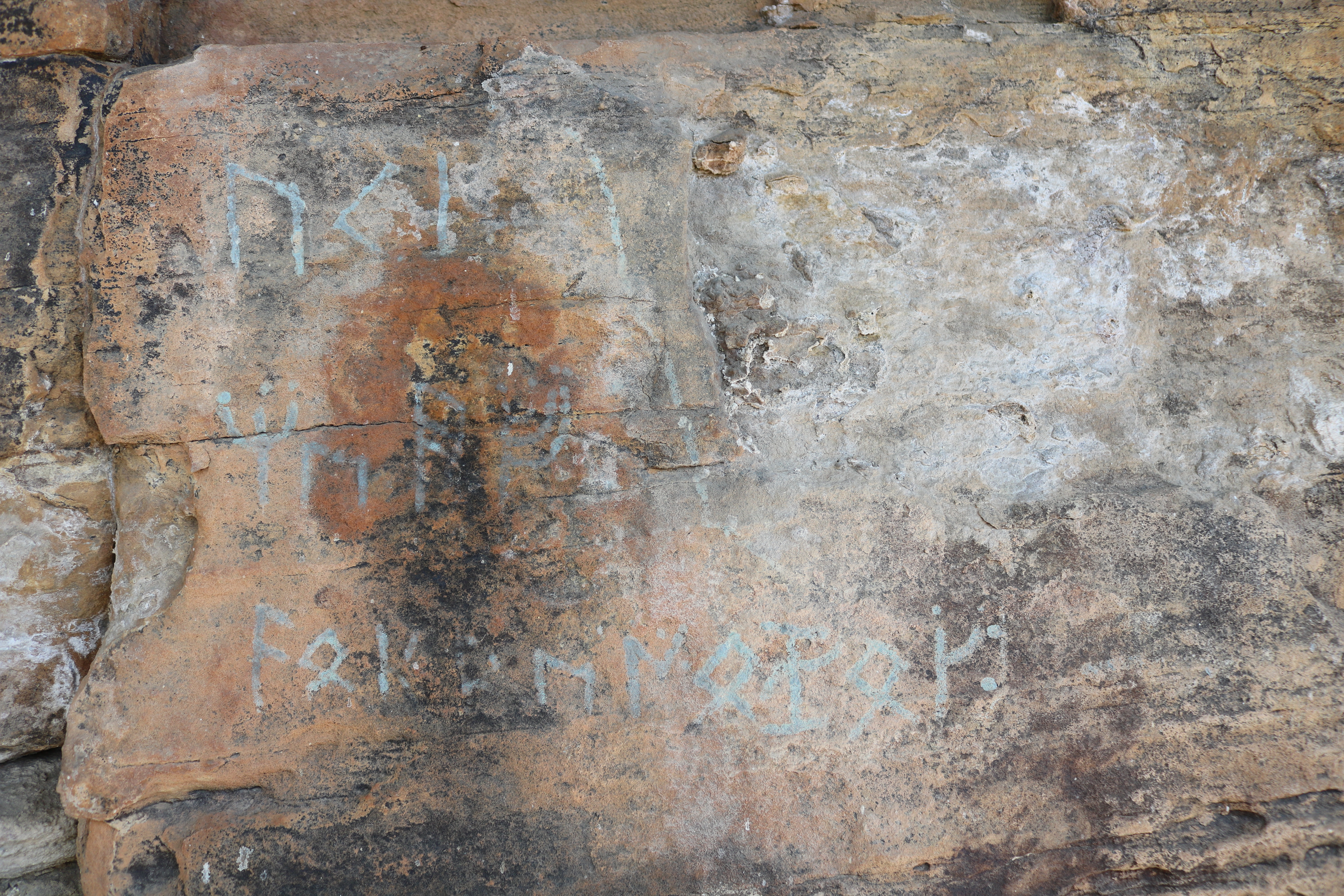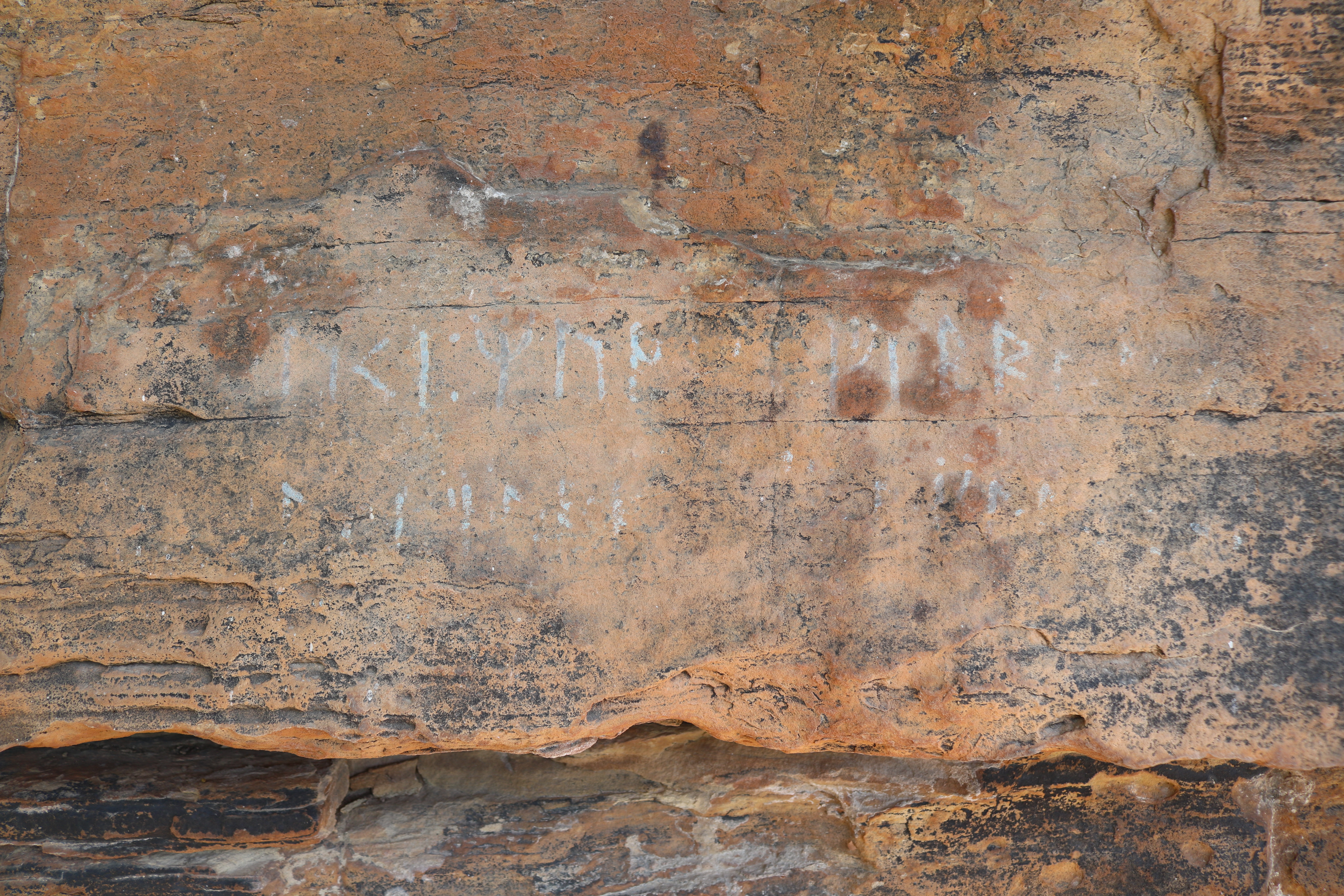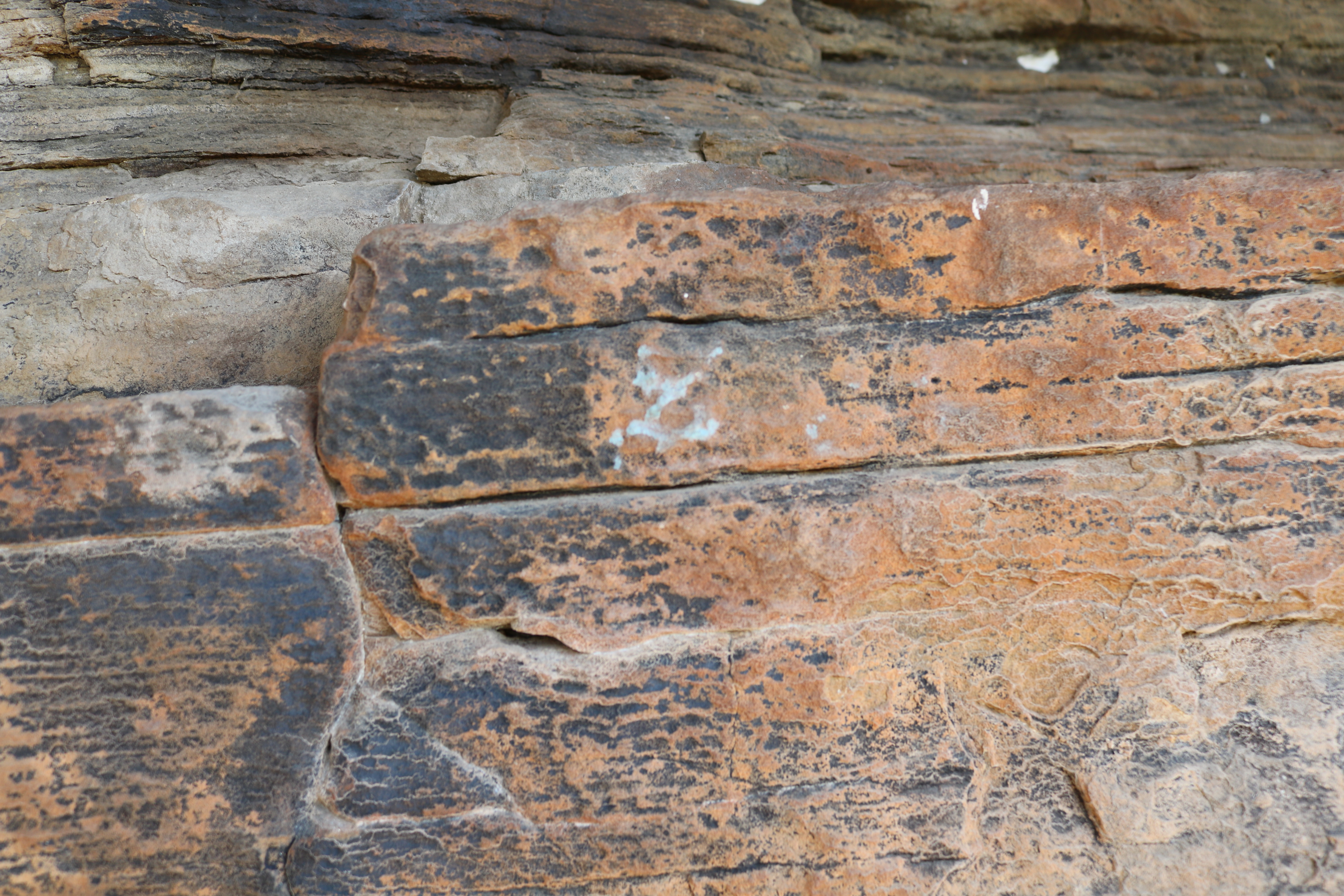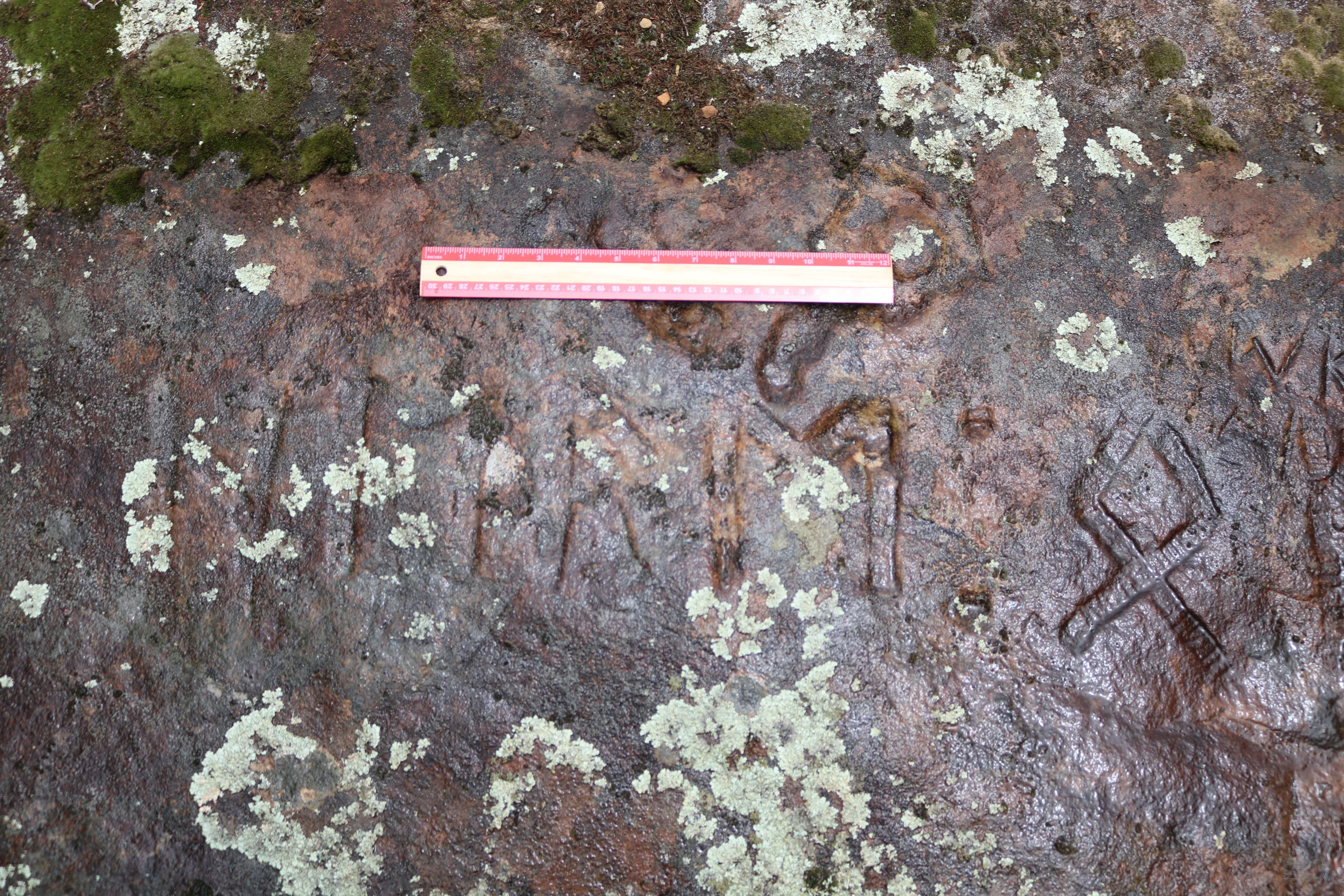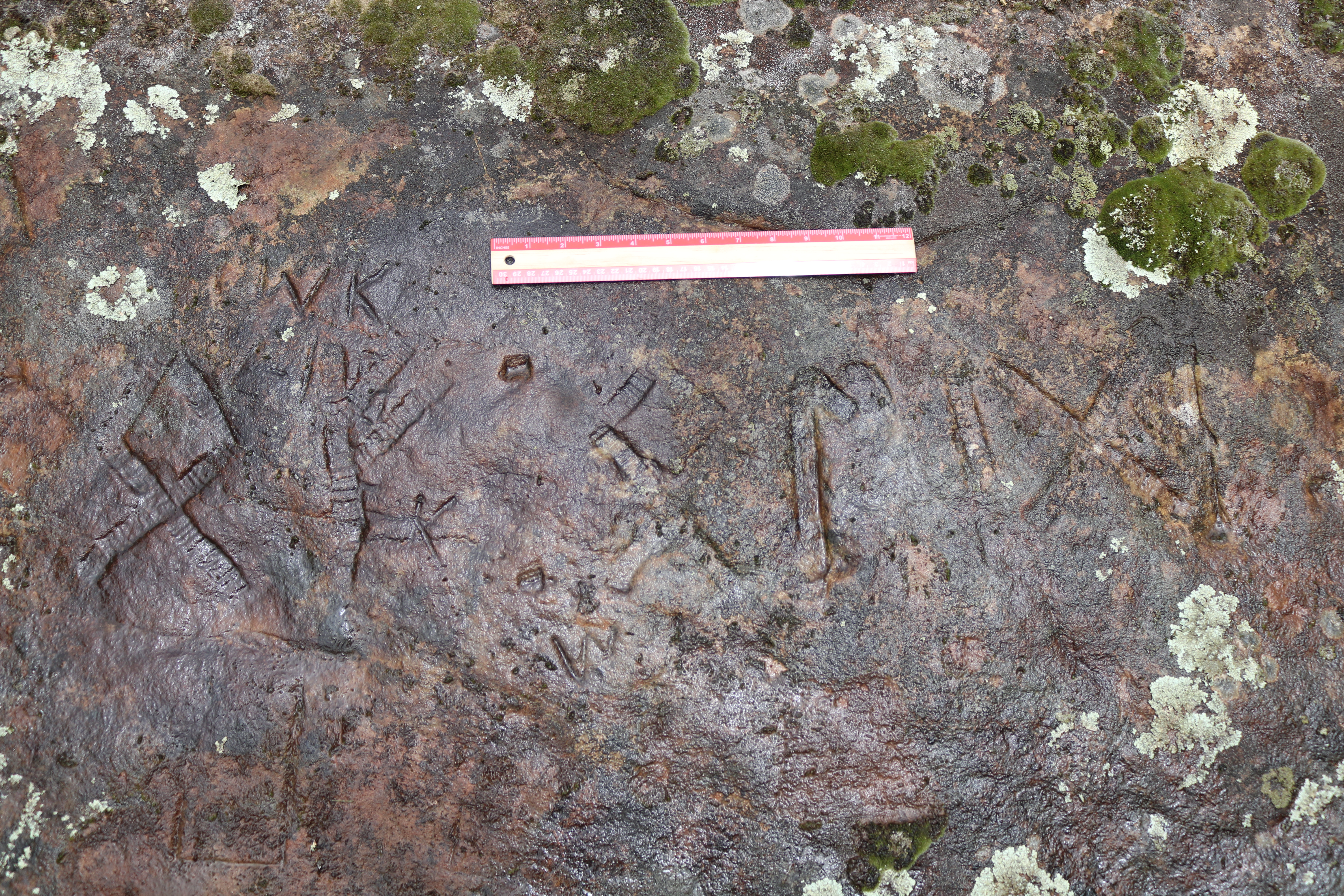Vikings in the Midwest?
By Todd Jurasek
During a late fall day in late 2000’s, Mike Sulivant, Adrian Sulivant, and I were exploring a small drainage area in eastern Oklahoma in search of petroglyphs.
After a long fruitless yet invigorating hike, Mike suggested we make one last sweep along a small cliff line. Under this small outcropping lay the faded painted remains of what appeared to be writing. The pale blue script was immediately recognizable as Norse, Older or Elder Futhark, to be specific. It was also mixed with an unidentified script.
What is ancient Norse writing doing in Oklahoma and how did we recognize it?
Hidden History
To understand it is important to look way back in history.
Around 1000 AD, recently converted Christian evangelist, explorer “Lucky” Leif Erikson, set sail across the Labrador Sea from Greenland in pursuit of a rumor of land at the edge of the Western Frontier.
Not unlike his infamous father Erik the Red and the establishment of Greenland, Leif would become famous in his own right, with his name forever attached to the discovery of the land later called Vinland. The Viking Golden Age of dominance that spread across Europe and throughout the known world, began around beginning of the 9th century and extended well into the middle of the 11th century. Powered by well- built ships, a lust for material possessions and adventure, a desire to colonize and a newly adopted Christian religion, the Norse, commonly known as Vikings, spread their culture wherever the winds blew. Sadly, hundreds of years later, after leaving a marked impression on the known Western Frontier and into North America, only a trail of crumbs would remain to testify of their former presence. Some of the remaining evidence exists in the form pre-Christian writing known as runes. Runes were basically symbols primarily carved into rock, bone, wood, and various objects and believed to have possessed magical powers. Large slabs of rock donning poems, stories, and tributes were dubbed “runestones”. The usage of runic writing or runes predates the use of Latin before the Christianization of the Norse people. Thousands of both runic inscriptions and runestones can be still found across Scandinavia today.
Runes have additionally been found across the continental United States, though mainly on the east coast. The most famous of these was discovered in Kensington, Minnesota in 1898 by Olof Ohman. The two hundred and two pound slab of rock known today as the Kensington Runestone, reportedly tells the tale of a failed 1362 expedition that may have been sent by Swedish King, Magnus Erickson, in search of the missing Norse Greenland colonies. Other significant runic evidence includes those found at Baffin Bay, Greenland and Spirit Pond, Maine and on a stone tower in Newport, Massachusetts.
Multiple runestones reportedly had once existed across parts of the Midwest and in my home state of Oklahoma. By the early 1900s, many of these had fallen victim to treasure hunters particularly during the Depression Era. Bewildered finders mistook the undecipherable carvings as pointers to vast wealth and in the process defaced, knocked over, and even blew them up in search of valuables. Others were destroyed out of fear of the government taking their land or by just plain ignorance. Whatever the reason, the apparent numerous runestones that previously could be found across the state have all but vanished. The few survivors have been basically been ignored and left unprotected.
Oklahoma Writings
My deceased friend, researcher Gloria Farley, dedicated much of her life to the search for physical evidence of pre-Columbian explorations to America and of the Vikings in particular. Living in the heart of a rumored Viking habitation hotspot, she spent untold years combing the Oklahoma countryside looking for runestones and related objects of interest. Gloria fought for years to protect and authenticate what would be later known as the Heavener Runestone. Her efforts eventually led to the creation of Heavener Runestone State Park located in the stunning hills of southeastern Oklahoma. Some dditional runestones of note discovered in Oklahoma are:
- The Poteau Runestone: In 1967, teenagers Henry Mc Bride and Michael Griffith, discovered a runestone while playing amongst the foothills of Cavanal Mountain just outside of Poteau.
- The Shawnee Runestone: In August of 1969, Jim Estep, Mikel Lindsey and David Sersen uncovered what may have been a Norse gravestone inscribed with Elder Futhark runes on it a short distance from the Canadian River near Shawnee.
- The Neff Spur Millstone: A millstone with runic writing was unearthed in the vicinity of the Poteau River near the town of Neff Spur.
- Heavener Runestone Number Two: In 1954, Ed Baker rediscovered a stone near a fence with several runes carved upon it nearby Morris Creek. Morris Creek runs out from a canyon near the main Heavener runestone, also known as “Heavener Runestone Number One”.
- Heavener Runestone Number Three: In 1959, Wes Thomas rediscovered a handful of runes on a stone perched up on a high point on Poteau Mountain where Heavener Runestone One is located.
Our Discovery
Getting back to what we discovered in eastern Oklahoma, Elder Futhark consisted of 24 runic characters. It was used primarily between the 2nd and 8th centuries then replaced by a simplified 16 runic character version known as Younger Futhark during subsequent centuries before being absorbed into Old English Latin.
This is the very same script found on the Heavener Runestone popularized by Gloria Farley as well upon several inscribed stones uncovered in Oklahoma. A week after this incredible find I discovered a second single inscription chiseled into a nearby slab of rock. Once again, the writing appeared to be Elder Futhark but unlike the cliff face script, this carving appeared to be 100 percent Elder Futhark.
The cliff face inscription is approximately four feet two inches in length. The lettering is broken up into two main sections with three rows of one to one and a half inch letters. An additional solitary letter lies to the upper far right of the panel. Close examination of the panel reveals the majority of the letters are badly worn and almost entirely gone. If it weren’t for a slight overhang the site surely would have succumbed to the weather many years ago. Several hundred yards from this cliff lay a second site with a heavily worn inscription chiseled into a large slab of stone. The inscription consists of eleven, possibly twelve, five to eight and half inch letters in an almost six-foot line. The inscriber appears to have used a half inch metal chisel in continuous movement to create the letters, as was pointed out by Mike. While little is known about the authors of both of these sites, it is fair to say that the person or persons responsible were educated and may have been an accompanying priest. Educated priests often accompanied traveling groups of traders and explorers throughout man’s history. The average person living during this time would have struggled to write the small inscription let alone the more complex mixed painted script upon the cliff. Mike and I are currently in the process of getting the sites properly translated.
Reasons For Rune Locations
What were these people doing at this particular location?
The runes appear to have been made by travelers passing through the area. Very few people came through this part of Oklahoma during this period of history and even fewer lived here. The nomadic Wichita, the Caddo, the Mississippian Caddo culture at Spiro, and assorted plains Indians dotted the area.
Maybe these individuals were exploring trade routes, hunting buffalo, or were even trapped as a result of inclement weather as Mike speculates. There is even the outside chance some clever individual or individuals, may have perpetuated a hoax. The idea of authentic Viking runes being discovered in the middle of the United States is hard idea for skeptics to swallow. A mingled inscription which included Elder Futhark would be impossible to accept. What many people fail to consider is that the Vikings along with most cultures in history, not only traded with others but often jointly shared together in endeavors such as travel, trade, and explorations. This factor alone could explain why some inscriptions appear to be composite ones. Until further research is done the author’s identity remains a mystery. Both runes are however extremely worn giving them the appearance of being hundreds of years old or older.
Recent popular TV shows such as Josh Gate’s ‘Expedition Unknown’ and Scott Wolter’s ‘America Unearthed’, continue to investigate the possibility of Viking visitation here much earlier than Columbus. There is no question the Vikings had at least reached the shores of America with compelling evidence to suggest they did more than that. Iron tools and weapons, earthworks, log houses, smelting furnaces, customs and traditions of Native Americans such the Iroquois and other cultural items of note seem to indicate significant numbers of them may have lived here for many years. Then there is also the survival of potential runic writing like Mike, Adrian, and I, as well as others have found. The idea of Viking voyages to America prior to Columbus’s arrival is an enduring mystery that continues to fascinate the public today and will for years to come. “Truth is often stranger than fiction”, and on occasion, a whole lot more exciting. Images of Vikings fighting, struggling, and thriving on the American frontier a thousand or more years ago, is one I hope is proven true. Until then, researchers like Mike, Adrian, and I will continue to hunt and dream.
Cliff Face Paintings
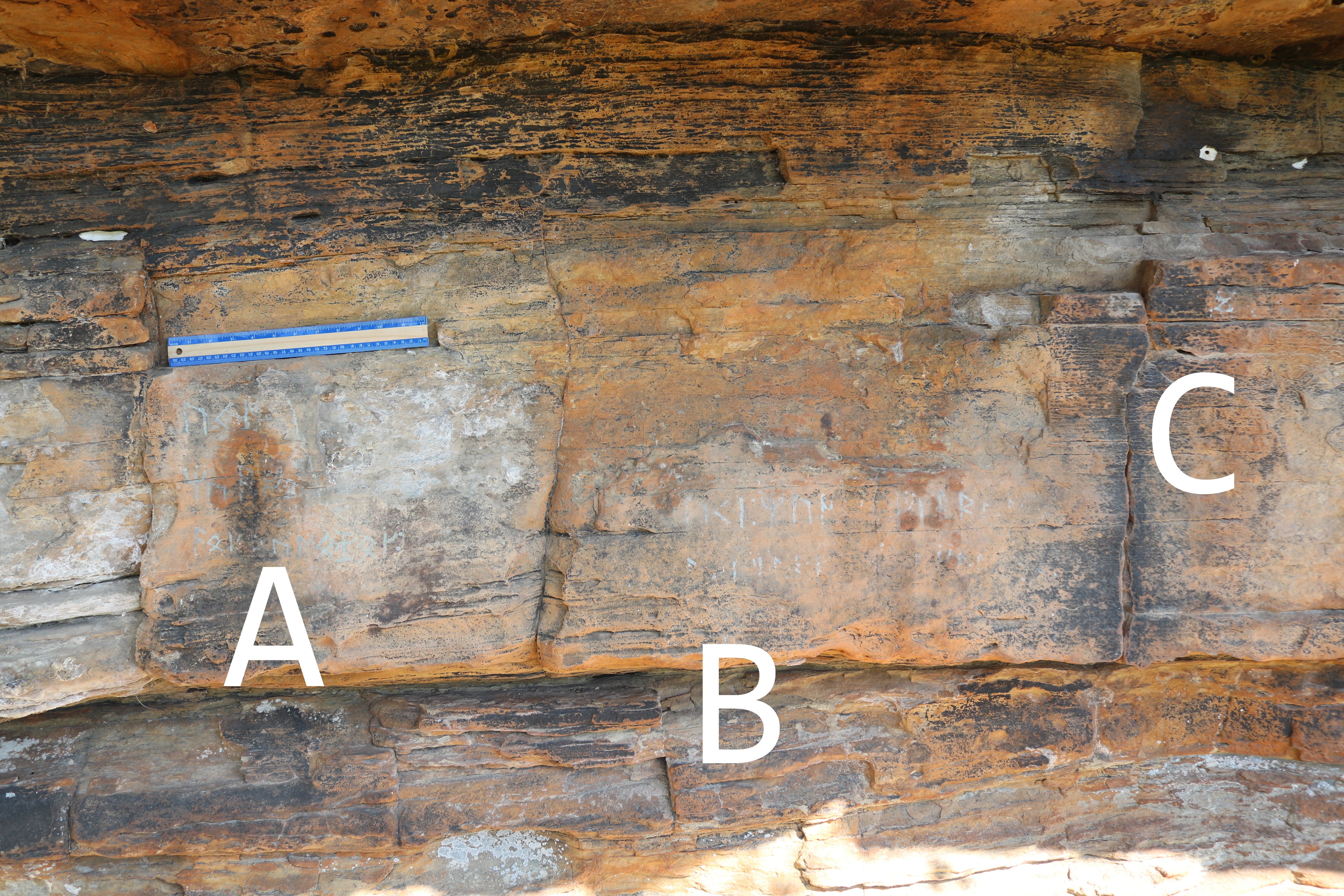
Rock Slab Inscriptions
